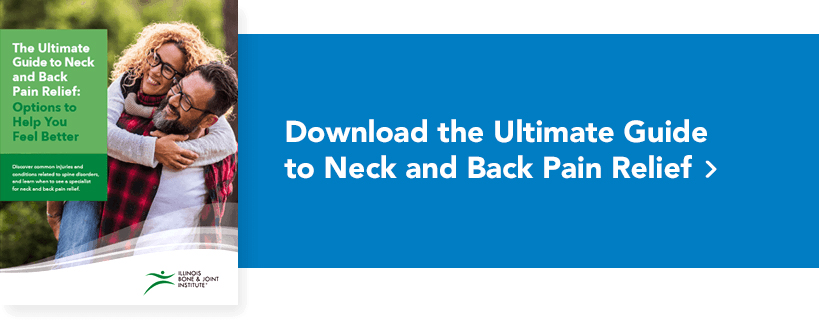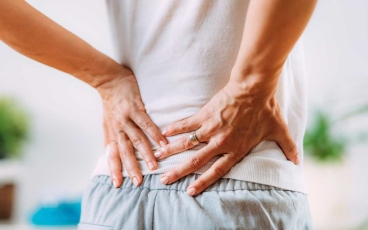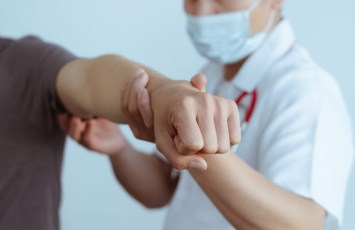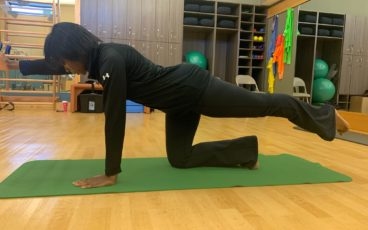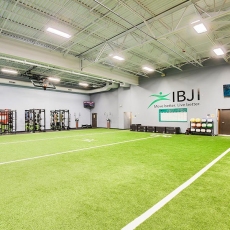If you’ve been suffering from lower back pain, you’re not alone. One in every four working adults experiences low back pain, according to the Centers for Disease Control and Prevention.
Keep reading to learn the causes of pain in the lower back, valuable tips for managing and treating your symptoms at home, and when to see a back specialist about options to relieve the pain you feel.
What Is Low Back Pain?
For some people, lower back pain is mild and comes and goes. The pain is ongoing and severely impacts the quality of life.
There are two types of back pain:
- Acute Back Pain
- Chronic Back Pain
Acute Back Pain
Short-term lower back pain is called acute and is the most common, lasting just a few days to a few weeks. It typically resolves on its own with a few days of rest.
Chronic Back Pain
About 20 percent of people affected by acute low back pain will develop chronic low back pain, lasting 12 weeks or longer. In some cases, treatment for the injury or condition causing the pain will provide relief. In other instances, the pain may continue and need management
Symptoms of Lower Back Pain
Symptoms associated with back pain can vary depending on the cause or severity of the injury or condition. Some common symptoms include:
- Trouble Bending or Twisting Your Back
- Difficulty Standing Up Straight
- Dull Aches or Stabbing Pains
- Pains That Radiate Down One or Both Legs
- Weakness, Numbness, or Tingling Sensations
Back Pain Symptoms That Require Immediate Care
You know your body and what is normal and abnormal for you. Pay attention to the pain or abnormal sensations you feel and see a doctor if you think something may be wrong.
If you experience any of the following severe symptoms, get medical care right away:
- Severe Leg Pain or Lower Back Pain
- Sudden Weakness, Numbness, Tingling, or Electric Shock-Like Pain
- Pain That Doesn’t Improve After Two Weeks
- Pain That Gets Worse, Even When Using At-Home Remedies
- You Lose Control of Your Bowels or Bladder Function
What Causes Low Back Pain?
There are many different potential causes of lower back pain. Figuring out what is causing your pain can help you get the proper treatment to provide relief and get you back to your normal activities.
Work-Related Causes
Almost everyone has lower back pain at some point in their lives, and it’s one of the top reasons for missing work in the U.S. Unfortunately, your job can also be what’s causing your back pain in the first place.
If your job requires heavy lifting, pushing, pulling, or using equipment that vibrates your spine, you’re at risk of sustaining an injury that causes back pain.
Office workers are at risk for back problems too. Prolonged sitting with little to no activity creates muscular weakness and imbalance, which leads to lower back pain—especially with poor posture or a chair that doesn’t provide enough back support.
Types of Injuries
Anyone can sustain an acute injury resulting in lower back pain. Still, they’re particularly prevalent in athletes who participate in high-contact sports like basketball, football, or rugby. They can also happen in a car accident, fall, or another traumatic event.
The most common types of injuries that contribute to back pain include:
- Sprains (Overstretched or Torn Ligaments)
- Strains (Tears in Tendons or Muscles)
- Spasms (Sudden Contraction of a Muscle or Group of Muscles)
Conditions That Cause Low Back Pain
Several conditions of the spine list lower back pain as one of their top symptoms. Those conditions, in order from most to least common, include:
- Herniated Disc (Typically causes low back and leg pain)
- Spondylolisthesis (Typically causes low back and leg pain)
- Spinal Stenosis (Typically causes low back and leg pain)
- Arthritis
- Sciatica (Typically causes low back and leg pain)
- Spinal Nerve Compression or Inflammation(Typically causes low back and leg pain)
- Osteoporosis (Leading to fracture)
- Fibromyalgia
- Infections Involving the Vertebrae
- Ankylosing Spondylitis
Other Surprising Causes of Low Back Pain
While the above injuries and conditions are common causes of lower back pain, there are other lifestyle causes you may not even be aware of. Luckily, these are all things you can change by being mindful and making a few minor adjustments.
Posture
Nobody intends to have bad posture, but it’s easy to slip into the habit of slouching or hunching over when sitting or standing. You can reduce or prevent lower back pain by making the following adjustments to your posture.
While sitting:
- Sit upright as far back in your chair as possible.
- Plant both feet flat on the floor, with your chin parallel to the floor.
- Relax your shoulders.
- Use a rolled-up towel or lumbar pillow to support your lower back curve if needed.
While standing:
- Hold your head straight with your ears level.
- Make sure your shoulders are even and your hips are level.
- Relax your knees and point them both straight ahead.
- Wear comfortable shoes that offer good support.
Your Mattress
It’s possible that the type of mattress you sleep on may be contributing to your low back pain. According to Sleep Advisor, about 56% of people who sleep on a medium-to-firm mattress have less back pain in the morning than those who sleep on a softer mattress.
If you feel like your mattress may be causing you pain, it might be time to try a different one with better support. Sleep experts also recommend getting new mattresses every eight to ten years, so if you’ve had yours longer than a decade, it’s probably time to replace it.
Your Purse or Backpack
Carrying a purse every day (especially a heavy one) can be a source of neck, shoulder, or lower back pain. As you carry your purse, your body counterbalances the weight on one shoulder by pushing your head and neck forward. This puts extra stress on the vertebra, discs, and nerves of your spine.
A backpack is a better choice since the weight is evenly distributed across your shoulders. However, if it’s too heavy or doesn’t fit you properly, a backpack can also increase your risk of neck, shoulder, and back pain.
When carrying any kind of bag, choose one that fits you well and try not to overstuff it!
Who’s at Risk for Lower Back Pain?
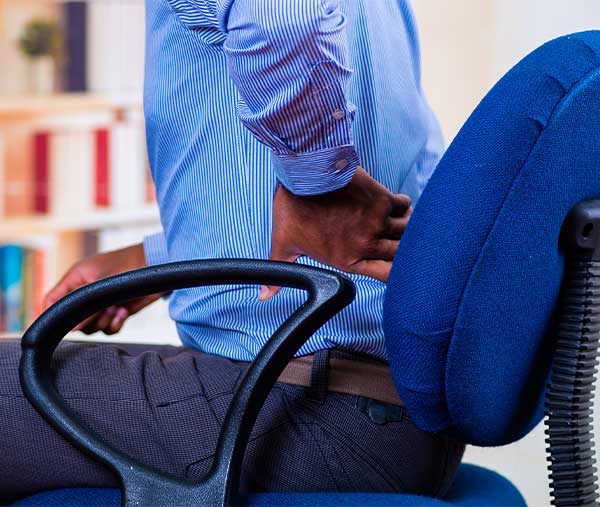
Most people will have to deal with lower back pain at some point or even many times throughout their lives. While anyone can experience low back pain, some factors may increase your risk.
Risk Factors for Developing Low Back Pain
- Advanced Age. Back pain becomes more common as you age. Bone strength loss from osteoporosis leads to fractures, and muscle elasticity and tone decrease. Your intervertebral discs also lose fluid and flexibility with age, which decreases their ability to cushion your vertebrae.
- Excess Weight. Being overweight or obese puts extra stress on the spine, contributing to an increased risk of low back pain.
- Smoking. The chemicals in cigarettes restrict blood flow and oxygen to your discs, causing them to degenerate faster and cause pain.
- Your Job. If your job requires heavy lifting, pushing, or pulling, you’re at higher risk for back pain. Working at a desk can also cause pain, especially if you don’t practice good posture.
- Fitness-Level. Back pain is more common among people with weak back and abdominal muscles that can’t properly support the spine. Getting moderate physical activity every day can help maintain the integrity of your spinal discs.
- Genetics. Some conditions that cause back pain are genetic, like ankylosing spondylitis. So if people in your family suffer from them, you might be at higher risk.
Ways to Prevent Future Back Pain
Aging is inevitable, so there’s no guaranteed way to prevent lower back pain. However, there are some steps you can take to lower your risk, including:
- Maintaining a Healthy Weight
- Not Smoking
- Exercising Regularly
- Practicing Good Posture
- Using Proper Lifting Techniques (Lift With Your Legs, Not Your Back)
- Sitting in Chairs That Support the Spine
- Wearing Shoes With Good Arch Support
Yoga
Practicing certain yoga poses can help with acute and lower back pain and has been shown to provide sciatica pain relief. Just be sure to get guidance from an experienced instructor and don’t overdo it. Pushing your body into uncomfortable positions could cause injury and create more back problems.
Massage Therapy
Massage can help reduce or relieve chronic low back pain, especially when combined with exercise and stretching. Massage therapy uses techniques that release muscle tension and reduce inflammation. Look for an experienced massage therapist familiar with back pain who knows the right areas to focus on.
Acupuncture
Some back pain sufferers find that non-traditional treatments like acupuncture help reduce their pain. Acupuncture involves inserting thin needles into areas of the body, which causes it to release natural painkilling chemicals, including endorphins, serotonin, and acetylcholine.
Pain Medications
Most people feel at least some relief from mild lower back pain with over-the-counter pain-relieving medications or creams.
The following non-steroidal anti-inflammatory drugs (NSAIDs) and over-the-counter pain medication can help with pain and inflammation:
- Ibuprofen (Advil, Motrin)
- Naproxen (Aleve)
- Acetaminophen (Tylenol)
Injections for Low Back Pain Relief
If conservative treatment with medications and physical therapy alone hasn’t provided relief from severe or chronic pain, your doctor may recommend getting steroid injections in your back as the next course of action.
FAQs About Lower Back Pain
To learn more about the causes and treatments for pain in the lower back, take a look at these frequently asked questions.
How Do You Know If Lower Back Pain Is Serious?
Back pain is never normal, though most of the time, it will get better on its own with limited activity and conservative treatments. But, if your pain is severe, persists after a few weeks of limited activity, you develop nerve symptoms in your leg(s), or your pain starts getting worse, you should see a doctor for a proper diagnosis of your condition.
What Are the Most Common Causes of Lower Back Pain?
There are many different underlying causes of pain in the lower back, but the most common include muscle strain, disc injury, or spinal stenosis. A back doctor can diagnose the cause of your pain and recommend the best course of action to get relief.
What Is the Easiest Way to Relieve Lower Back Pain?
Acute back pain will usually get better on its own with limited activity and with the help of remedies, including
- Non-Steroidal Anti-Inflammatory Drugs (NSAIDs)
- Muscle Relaxant Medications
- Topical Pain Relief Creams, Gels, or Patches
- Hot and Cold Therapy
- Gentle Stretching, or Physical Therapy
If these treatments don’t help relieve your pain, see a doctor for evaluation.
When Is Lower Back Pain Treated With Surgery?
If you’re suffering from acute or chronic lower back pain caused by nerve irritation, musculoskeletal injuries, or nerve compression and conservative treatments haven’t helped, your doctor may recommend back surgery.
How to Know if It’s Time to Get Medical Care for Your Low Back Pain
If your lower back pain prevents you from achieving your goals or impacts your quality of life, it’s time to schedule an appointment with a specialist. If you develop nerve pain in your leg(s), you may want to be evaluated. In addition, should you develop weakness, numbness, or other neurological symptoms, you may consider evaluation with a spinal surgeon.
Trust the Back Pain Experts at IBJI
At IBJI, we have an experienced team of physical and occupational therapists, rheumatologists, pain management physicians, sports medicine physicians, and spine surgeons who can evaluate you and start you on a path to relief for your lower back pain.
If you’d like to be evaluated, Schedule online, and our experts can diagnose your pain and work with you on a treatment plan to get you back to feeling your best.

